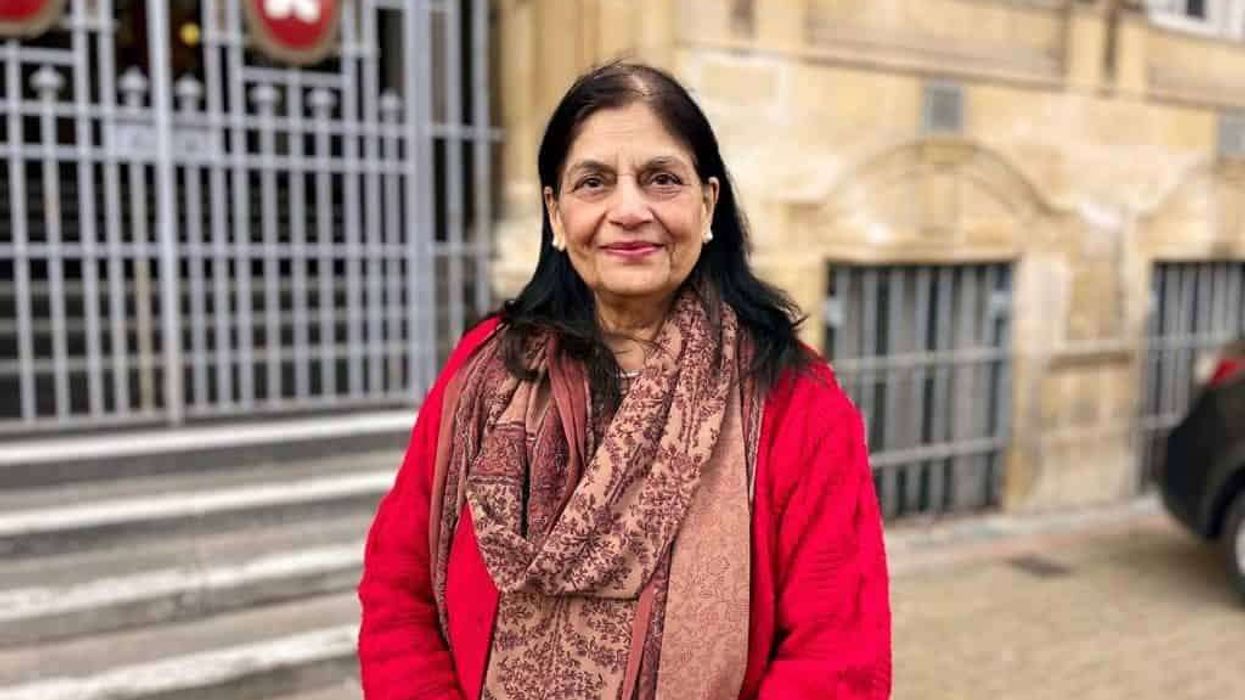by Lauren Codling
The models walked with strength and poise on the catwalk, heads held high, faces etched with confidence, concentration and courage. With their vibrant clothes, the models exuberated an ethereal beauty that was riveting to watch.
But this was no regular fashion show with designer clothes and professional models. Eight acid attack survivors took to the catwalk in east London last Tuesday (10) to raise awareness of gender-based violence in Bangladesh.
Survivors' Runway was organised by ActionAid, an international charity that supports girls and women in the poorest areas of the world.
Among the women taking to the catwalk was Nurun Nahar, who works with ActionAid Bangladesh as a programme officer.
When Eastern Eye met Nahar at a rehearsal, she appeared a little shy. She was a young woman when she was attacked after rejecting a boy’s proposal in 1995. He, accompanied by 11 others, came to her house and threw acid over her body and face, causing serious injuries.
“Of course, I hate him,” Nahar said of her attacker. “But now I realise that he learned from society. It’s not only his fault. It is society that made him like that.”
Nahar endured years of surgery and treatment and the scars on her face and hands are obvious to see. But through the years of recovery, she kept her courage and confidence.
The 37-year-old, who recently completed a master’s degree in political science, said she hoped to let other acid attack survivors know there was hope.
“Your life is not over. You have a future. You will fight for it. It is not your fault, it is the fault of society and who did it to you,” Nahar told Eastern Eye. “You will survive and you will cope. You will make a good future. Your face or hands or eyes may be injured, but it is not the end.”
Another survivor who walked the runway in the Truman Brewery, Brick Lane, was 15-year-old Sonali who was only 17 days old when she was attacked by acid in 2002. Her scarring was so traumatic that it caused her soft, newborn skull to change shape.
Petite in height and frame, Sonali appears like a fragile doll – but her spirit is anything but delicate.
She has endured cruelty all her life because of her severe scarring: “Children used to be afraid of me. I never wanted to go to school. No one came to play with me. They stared at me,” she said.
The police in Bangladesh failed to take witness statements in relation to her attack, so the court dismissed the case and the perpetrators have never been brought to justice.
There are many similar stories. Acid attacks in Bangladesh peaked at 400 in 2002.
ActionAid has spent the past few years campaigning for regulations leading the government in that country to introduce legislation that helps control the sale, use and storage of acid.
Since stricter legislation came into force, acid attacks have fallen to under 100 per year.
A study of 90 cases in Bangladesh found that 80 per cent of the assaults were in the victims’ homes and almost 70 per cent of those attacked were female.
Bibi Russell, a former model and designer of clothes shown on the catwalk, was keen to join forces with ActionAid Bangladesh to help acid attack survivors fight for their rights.
She helped launch a similar event in Dhaka for International Women’s Day in March this year. The activist, who has also worked with girls caught up in child trafficking, described her efforts as a “tribute” to the survivors.
“There is so much to learn from [the survivors],” she told Eastern Eye. “You need to look at them. Look at their eyes. Look at how they’re performing. I could do a show in London with any models in the world, but I’m so honoured they’re doing my show.”
Farah Kabir, the country director for ActionAid Bangladesh, told Eastern Eye the project was used to bring the issue back “on the agenda”.
“[The show] would give the acid survivors an opportunity to feel dignified, feel respect but also draw the attention of the policy makers and the likes of me and you, so I had the idea of the fashion show,” she explained.
Kabir has been working with the charity for 11 years and said one of the key elements in organising the show was to “redefine beauty”.
“It was not just the face, it’s the person. It’s the character, it’s the personality, the courage. Imagine if you are going about in society where everybody looks at you, at your disfigurement, as something wrong,” she said. “It was not their fault. They have the courage to get up in the morning, face the world, so I really respect them.”
A day after Eastern Eye met the women, they took to the catwalk in an inspirational show.
Sonali, who had seemed like a tiny doll the previous day, was beaming with confidence and appeared taller than anyone else in the room.
Nahar’s nervousness appeared to have become a distant memory as she danced to the music, alone, smiling and moving her body to the beat.
The women and men affected by the vicious attacks suffered physical pain, but what the attackers could not take away was their dignity, strength and ultimately, their beauty.
“[The survivors] are brave, courageous and they’re strong and they can fight. They can change their lives. They are changing their lives,” Kabir said.
“Today they see themselves as being leaders. This is our achievement.”
To find out more and donate to ActionAid visit: https://www.actionaid.org.uk/donate












